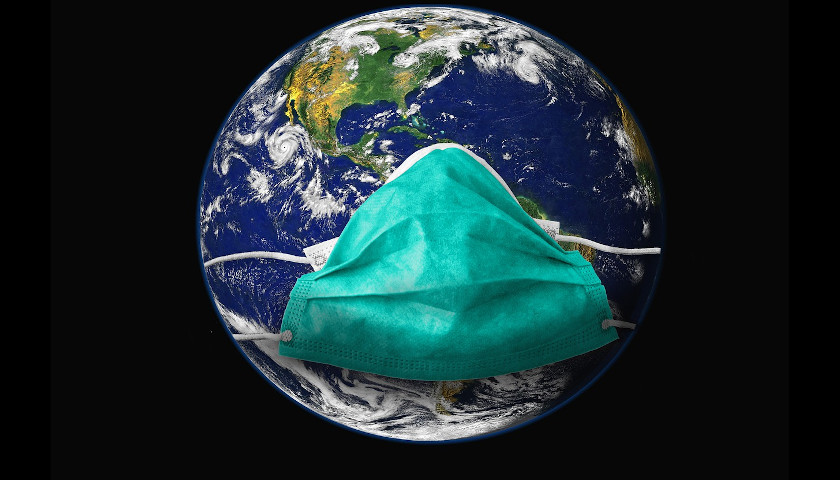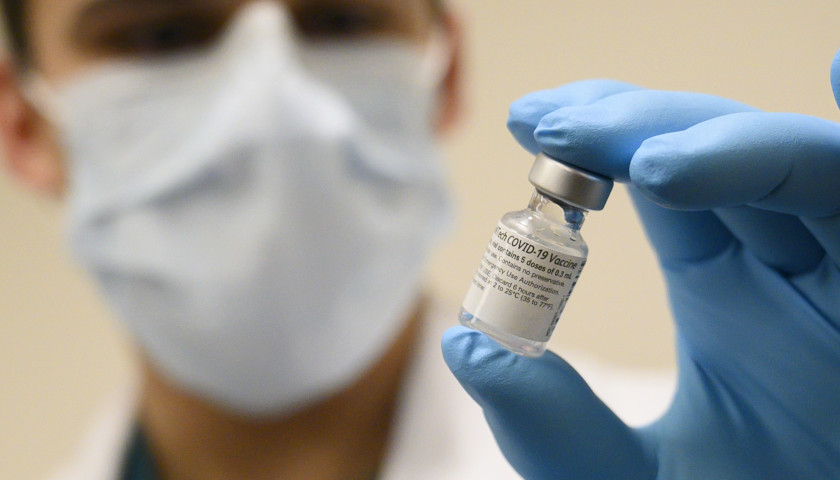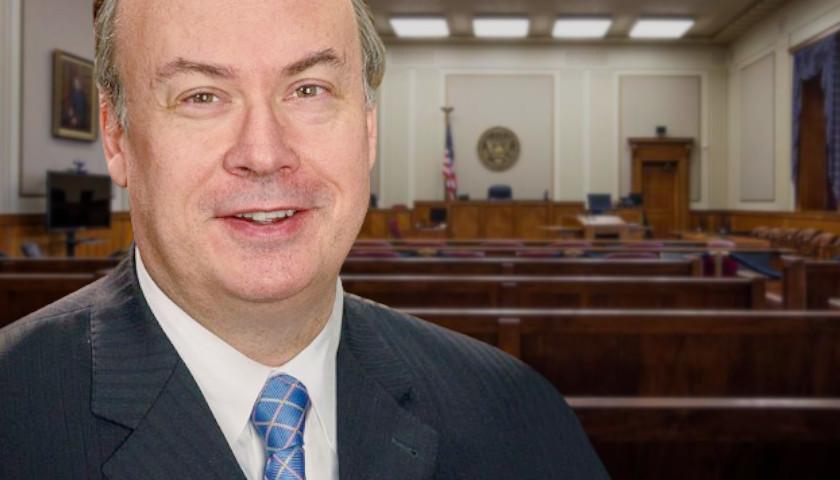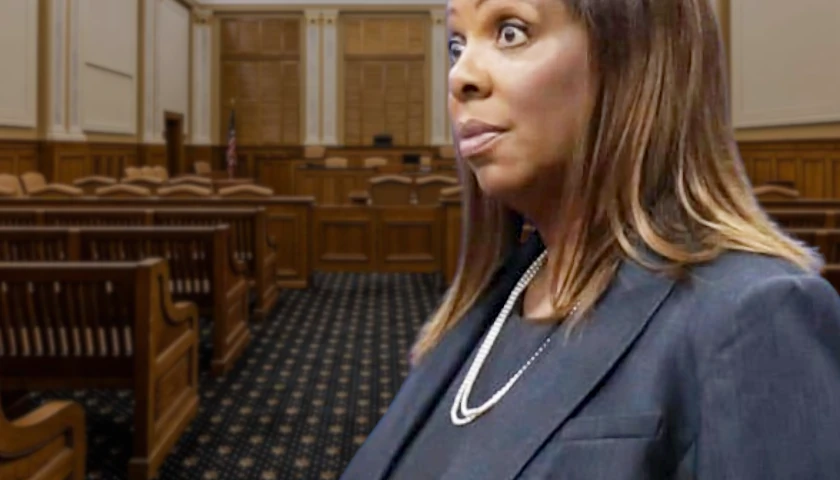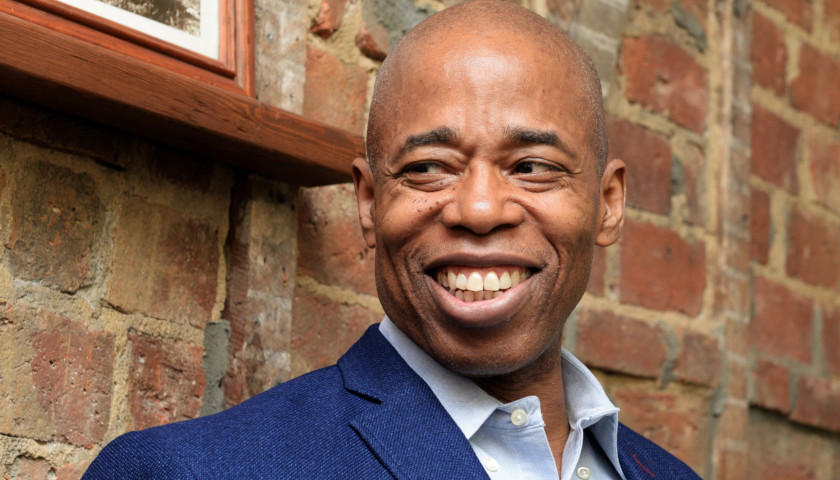by Matt Shapiro
It is clear to everyone that the world of COVID-19 into which we have been hurled will become a turning point in our history. I started writing for this august publication about COVID in early March 2020, as the pandemic hit a nursing home within walking distance of my house. Something big was happening. We could feel it in our bones.
It is therefore inevitable that we would start logging the history of this pandemic before the pandemic is even over. In the first few months, it seemed to me that this turning point would bring us together as a nation and perhaps as a global community. But as the months went on, it became clear that there were a set of people who sensed opportunity in the air. This moment of history was not, to them, a moment to heal and unite, but a moment of leverage in which we can craft the right narrative to bend the curve of history when it is most pliable.
The COVID-19 Catastrophe was first published on June 22 of last year, when we were only a few months into this crisis. The second edition has been recently released, and it is this version that I’ll be addressing. Written by Dr. Richard Horton, editor of the Lancet and a fierce advocate for the role of the World Health Organization (WHO) in international health policy, this book stands as a rich insight into what high-level public health officials think about what has happened with COVID-19 and the global changes that will emerge from this crisis.
At first, The COVID-19 Catastrophe presents as a simple and open fact-based account of this pandemic. There is an excellent chapter that walks through the timeline of the virus from December 2019 to April 2020, and it reads like a horror movie in which the audience knows the murderer is right behind the door while the characters stroll forward with confident ignorance.
Dr. Horton documents some of the emerging realization that everything is about to change, but the book walks a tightrope between simple facts and narrative-building exercises. Winston Churchill famously snarked, “History will be kind to me, for I intend to write it,” and that desire is the engine pulling this book forward. The heroes of this book are the individuals and institutions closest to the author: the WHO, public health professionals, and, incredibly, the Chinese government.
It is in the China narrative that we raise our first eyebrow. Dr. Horton helpfully informs us of the brave Dr. Li Wenliang (please write his name down and remember him for years to come for his heroism), who warned his colleagues of COVID as it tore through his hospital. He was forced by the Chinese government to recant before he ultimately succumbed to the disease. But Dr. Horton then praises China for sharing the COVID genome as early as January 12. But he neglects to note that this was a week after it was sequenced and that the lab that released the genome was shut down by Chinese authorities in retaliation.
Herein lies my primary skepticism about this book. Dr. Horton praises “Chinese science” for the release of the genome but omits the entire story behind this. To one degree, he and I agree wholeheartedly. “Chinese science” is a hero of this story — but only if we agree that “Chinese science” was performed by brave and sacrificial Chinese scientists who were subsequently persecuted, attacked, and muzzled by the Chinese Communist Party. I want to call that out in this review because Dr. Horton does not in his book.
Like Dr. Horton, I’m trying to walk a fine line. If you want a public health insider’s account of the COVID-19 catastrophe, this book will get you most of the way there. But the history is presented as a Swiss-cheese accounting, with certain elements conspicuously missing. The subtitle promises to tell us “What’s Gone Wrong and How to Stop It Happening Again,” but we only hear about that first part. I’ve scoured the book for how to stop this happening again, and there are precious few details about what, exactly, could be done if we discovered a new virus sweeping the world tomorrow. Dr. Horton recommends enlarging WHO funding and calls on governments to police social networks and crack down on an independent press that dares to contradict professional public health advocates. He envisions an emerging world in which public health officials are an unquestioned authority and given complete control over the levers of government policy. Public health institutions are to be the main sources of truth, honesty, and the very survival of a global humanity. He laments “the world will not have a full and complete opportunity to learn from Taiwan’s success … because the country’s observer status at WHO meetings is blocked by the Chinese government in Beijing,” as if truth must necessarily come through an official source like the WHO or it cannot known.
This reliance on the WHO is the author’s downfall. In the next decade, there will need to be a conversation about how we can improve the both the quality of public health institutions and the public’s trust in those institutions. I agree with Dr. Horton’s claim that we need reliable and trustworthy public health institutions to help mitigate the next pandemic. Where we diverge is that Dr. Horton believes the problem is that the WHO is underfunded (he calls President Trump’s decision to cut WHO funding “a crime against humanity”), while I think that there is much larger-scale reform needed that reaches far past dollars and cents.
If you’re interested in what this expanded funding will buy us, you will not find it in this book. Dr. Horton evidently does not see any failures in the realm of public health during this pandemic, or, if he does, he does not highlight them. He recounts no errors on the part of the WHO, does not bring up any of the failures of the CDC, and, incredibly, does not even mention the FDA or their role in the early testing debacles or slow movement on vaccine approvals.
This book suffers from an insider bias in a way that we’ve seen repeatedly in the last year. Last March, while conducting an interview with WHO adviser Bruce Aylward, Radio Television Hong Kong reporter Yvonne Tong asked Aylward if the WHO would consider Taiwan’s membership in the organization, which has been denied in order to maintain a healthy diplomatic relationship with China. Aylward acted as if he didn’t hear the question, and, when it was repeated, he hung up on Tong. When she called back, he pretended that the call was accidentally dropped, and when she reiterated her line of questioning, he ended the interview.
The clear message was that it was not worth telling the truth if the truth would annoy the Chinese government.
We get that sense all throughout this book. Dr. Horton’s harshest words for China come when he writes that “The Chinese government owes the world a more detailed explanation of what took place in Wuhan” and then proceeds to praise Chinese scientists and health workers. Don’t misunderstand me — that praise is entirely appropriate. May I be struck dead before I impugn the heroism and sacrifice of the Chinese scientists and doctors who gave their lives and reputations to warn us all of the coming storm. But given the repeated punishment and censorship of those scientists by the Chinese Communist Party, maybe we should be a hair more skeptical of the Chinese government’s role here.
The problem here is that Dr. Horton is not able to admit to skepticism of the Chinese government. Perhaps he is, in his personal life and correspondence, skeptical about the authenticity and transparency of the CCP. But that skepticism has not made it into this book, which is intended as a history of the COVID-19 pandemic.
When I say that this is a history from the perspective of international public health officials, this is how that history plays out: Dr. Horton allows his righteous fury to flow, but only against certain targets. The Western world was unprepared for this pandemic, but he allows that criticism to rest in a certain anonymity. No one in particular is responsible for the disaster of COVID in the Western world, according to Dr. Horton. Though Italy was ground zero for the first explosion of COVID in the West, the Italian prime minister’s actions or response policies to that early crisis are not mentioned at all. There are only a few mentions of German Chancellor Angela Merkel, who was still shaking hands at meetings well into March. Dr. Horton has no words of rebuke for any of the French authorities, though France hosted the world’s largest Smurf convention even after the entire country of Italy was locked down. And Chinese President Xi Jinping is a non-character in this book.
In the context of the United States and the United Kingdom, however, the villains are well known. President Trump is lambasted repeatedly for his COVID response, as is British Prime Minister Boris Johnson. An undiscerning reader may come to believe that these two politicians were responsible for the entirety of the COVID crisis around the globe.
Why is it that certain targets are ripe for ridicule while others seem out of bounds? The answer is that Dr. Horton is conducting his own interview. He is attacking the institutions and individuals that he may safely attack from his position. These include the Western world in general, populist and right-wing leaders, and the cultures in the West that are widely dismissed in the elite realms of public health and academia.
When it comes time to criticize more left-wing figures or the Chinese authorities, Dr. Horton discovers his restraint. Knowing he will need the goodwill of the Chinese government in order to perform a postmortem investigation on this crisis, he chooses not to irritate them or otherwise give them reason to bar anyone in the WHO from that investigation. This is a laudable goal, as the investigation to come will require diplomacy, grace, and cooperation from the famously vindictive and censorious Chinese government. But perhaps this role makes him unsuited to write a straight history of this crisis.
Dr. Horton’s book is bold when he confronts the powers who have no sway over him, who can deliver no rebuke, and who cannot impact his future work. But his tone shifts immensely when he begins to speak of those who do hold sway, who can impede his efforts, and who actually do hold power in his world.
The COVID-19 Catastrophe is indeed a history of this pandemic, but it is a history that lives within history. We cannot possibly understand it until we understand the forces against which the author strives even to this day. When Dr. Horton writes, he writes as a denizen of the most elite world of public health. We must interpret his words as what is most acceptable in that subculture.
When he condemns the West for our response to the threat of COVID-19, we must understand that this is an acceptable opinion within his world. When he singles out the United States and United Kingdom for specific derision, we must keep in mind that this is not because the UK or U.S. have been performed overwhelmingly poorly but because it is permissible within his social context to publicly dismiss these countries. His praise of China as an abstract entity, muddling together the rebellious heroism of Chinese scientists while quietly implying that the Chinese government was their partner rather than their persecutor, is similarly intentional.
All this does not mean that I do not recommend this book. We are still in the middle of this crisis, and there are many more stories to tell. I suspect that, if there is a “final say” on this pandemic, it will be written by our children, who will be more able to hold in their minds the perspective of history as both an academic review of events and the personal experiences that will end up defining this era.
The COVID-19 Catastrophe will certainly be one of the texts upon which we rebuild our recollection of these days. But we must recall its omissions and seek to fill in the gaps. We must remember what has been omitted if for no other reason than to honor the heroes that history would rather we forget.
– – –
Matt Shapiro is a data visualization expert and software engineer based in Seattle.

